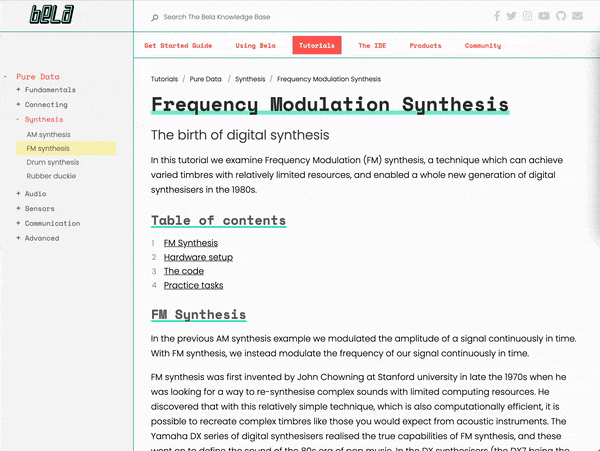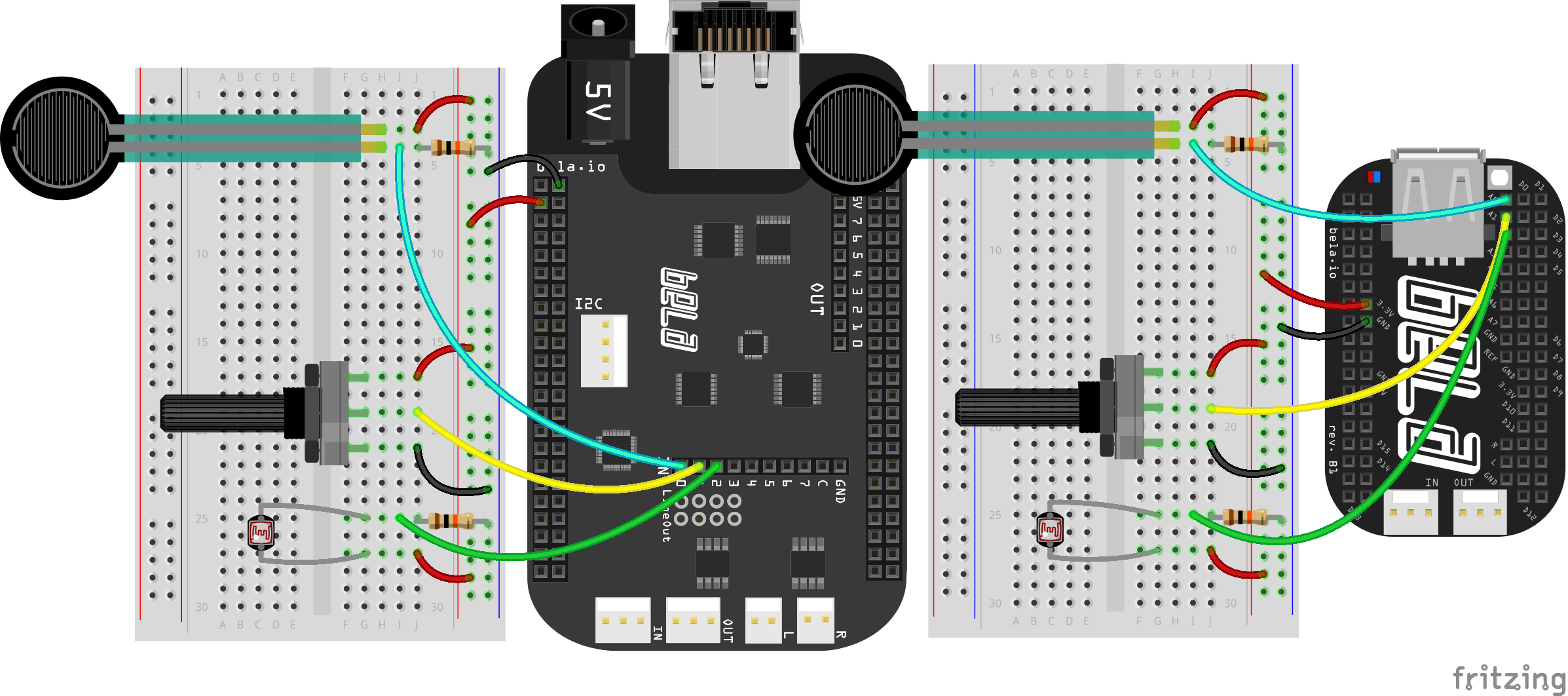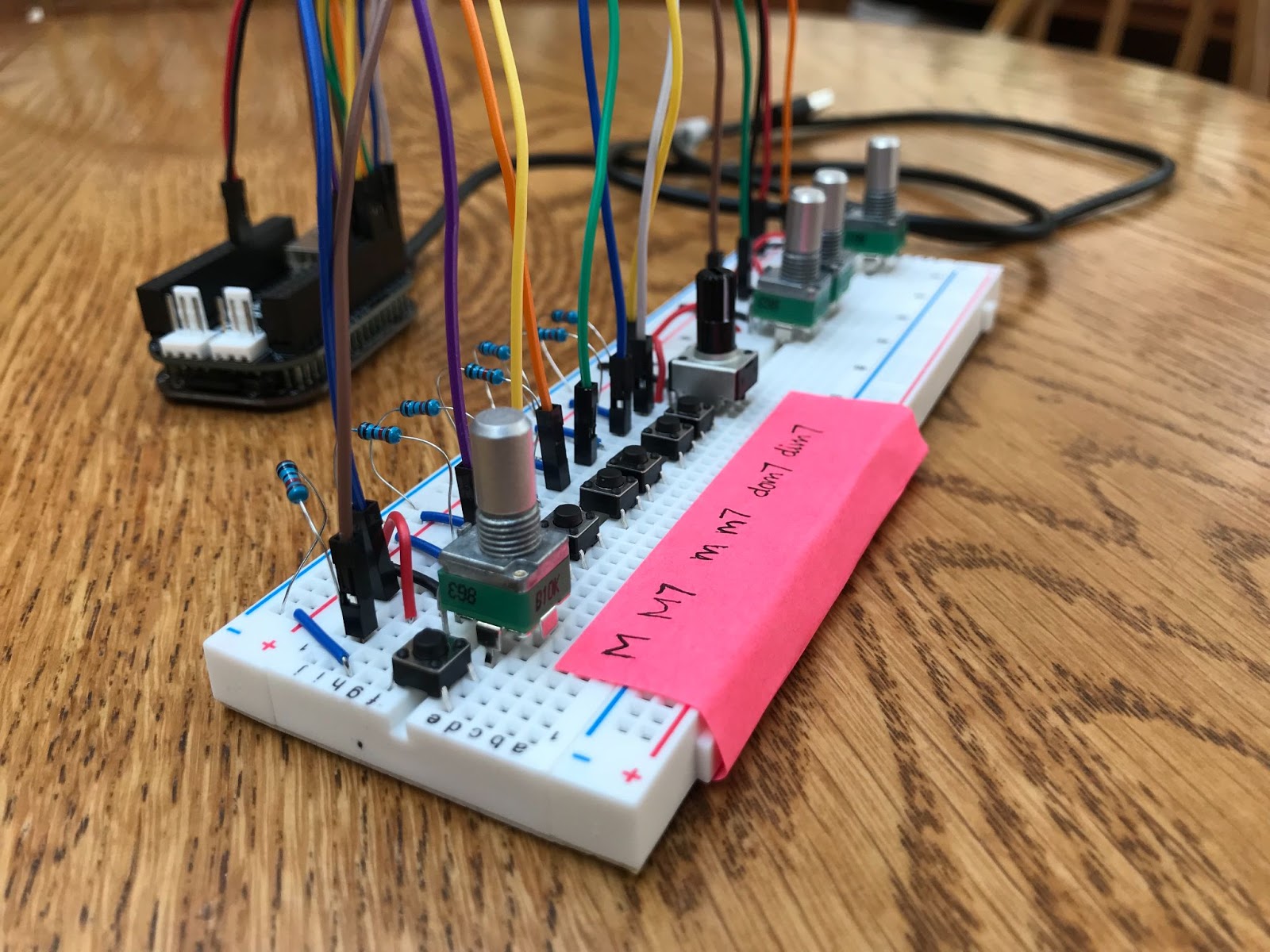Teaching Spotlight
Physical Interaction Design at Aalto University Helsinki, Finland
Physical Interaction Design is a master’s level course taught at Aalto University in Helsinki, Finland. The course, which uses Bela, Pure Data, and many different sensors and actuators, is offered to New Media and Sound Design students in the School of Arts, Design and Architecture. The teaching materials developed for this course are freely available online, and in this post we give an overview of the course and review some of the excellent student projects from last year.

The grand stairways of Aalto University's School of Arts, Design and Architecture.
Teaching interaction design through sound
Physical Interaction Design is a deep dive into the tools, concepts and practices for planing and building new interactions with digital environments. With a hands-on approach this course invites students to experiment with sensor technologies and embedded computing and thus confront fundamental concepts and technical issues faced during the design of digital products, services and interactive arts.
Physical Interaction Design has been taught since 2013 at Aalto university as part of the Sound in New Media Masters programme. Originally the course focused on using Arduino to create MIDI or OSC interfaces which could then interact with sound producing patches running in Pure Data on a separate laptop.

Some of the components used in the course.
In 2018 Koray Tahiroğlu invited Robert Jack from Bela to help adapt the curriculum to be Bela-based, allowing the students to run Pure Data patches directly on embedded hardware and interact with sensor and actuators from within their patches. The end result is the curriculum which can be found in the tutorial section of our knowledge base: a set of 27 individual tutorials which guide the students through circuit building, Pure Data patching, and bringing the two together into compelling interactive devices.

A preview of one of the lessons showing the practice tasks with hints and solutions.
What’s covered in the course?
As you go through each part of the course you’ll become familiar with a number of different techniques for producing sound with Bela using Pure Data, while also learning to build a series of circuits for connecting different sensors and actuators. The goal is that by the end of the course you will have a good grounding programming Bela with Pure Data - how the Bela system works, how to sense different types of physical interaction, how to build your own sensors from scratch, and how to create patches in Pd will create varied sonic output in response.
The course has the following structure which can be covered in around 20 hours:
Fundamentals: Course introduction, Hello sound, Editing a project, Introduction to the hardware
Connecting: Digital output, Digital input, Analog input, Analog output
Synthesis: AM synthesis, FM synthesis, Drum synthesis, Rubber duckie
Audio: Delays, Working with samples, Recording samples, Pitch tracking, Virtual string synthesis
Sensors: Capacitive sensing, DIY pressure sensor, Accelerometer
Communication: Oscilloscope, GUI visualisation, GUI control, MIDI, OSC
Advanced: Preparing for standalone, Custom render

A circuit diagram used in the course for connecting a pressure and light sensor to Bela.
Target students
This course aims to give students a strong practical and theoretical grounding in interaction design and the creation of physical interfaces for interactive sound. It gives them an introduction to the tools they need to start creating interactive sound projects, and the confidence to start creating their own projects.
This course is designed for learners with no previous experience in coding or circuit building, though it’s also great for experienced Pd programmers who want to learn about using Pd to program Bela or expand their hardware knowledge. The course builds gradually and guides you through creating patches in Pure Data while building up circuits from first principles.
The course is currently taught by Robert Jack and Camilo Sanchez.
Final projects
Below we have a selection of just a few of the final student projects submitted last year. These projects were developed over the course of just 3 weeks with all the students being new to Bela when the course began. The quality of their submissions were extremely high – congratulations to all the students for their hard work. If you would like to get in touch with any of the students about their projects please email us at info(at)bela.io and we will put you in contact.
Eelis Lähteenaro & Hyunji Kim
Aaron Geldert & Marija Sumarac
Olga Tasanko & Rudolf Westerholm
Yingqi Jia & Max Salomaa
Mercedes Krapovickas & Yajing Wang
Teaching with Bela
If you are interested in learning more about Bela in the classroom check out our Teaching Spotlight Series to see how universities, art colleges and conservatoires are using Bela in their teaching all around the world. You can also find extensive teaching materials in the tutorial section of learn.bela.io. Don’t hesitate to get in touch with us as we’re always happy to hear from people using our tools in education and we also offer educational discounts.




